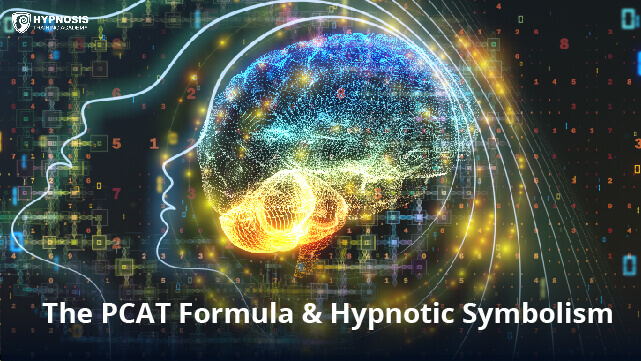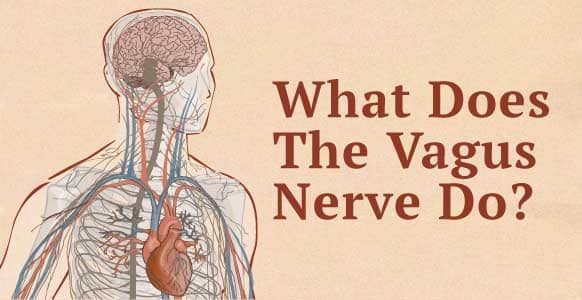![[GUIDE] Using The PCAT Formula And Symbolic Language In Finding Answers To Deep-Seated Problems [GUIDE] Using The PCAT Formula And Symbolic Language In Finding Answers To Deep-Seated Problems](https://hypnosistrainingacademy.com/wp-content/uploads/2021/12/using-the-pcat-formula.jpg)
“I talk of dreams, which are the children of an idle brain…”
That’s a metaphor from Shakespeare’s Romeo and Juliet.
In the play, Mercutio makes fun of Romeo’s idealistic notion of romantic love.
He thinks Romeo is a dreamer who should be more practical and down to earth.
To help the point hit home, Mercutio delivers his verdict in the form of a metaphor.
Like similes, metaphors are examples of symbolic language, the kind of language used in hypnosis to help people resolve various issues.
This is accomplished using a variety of techniques, one of which is the 4-part PCAT Formula.
When combined, the PCAT Formula and symbolic language make it possible to address any problem and lead the subject to a satisfactory solution.
In hypnosis terms, this involves using the Hypnotic Symbolic Language (HSL) System, a powerful and dynamic method for problem-solving.
Symbolic language makes it easier to face certain experiences such as trauma, because the symbols tend to shield you from the impact.
It is particularly effective when used as part of conversational hypnosis.
But what is the PCAT Formula and how does it work?
Hypnotic Symbolic Language & The PCAT Formula
The PCAT Formula is a 4-part hypnosis technique for solving problems and finding answers. The 4 parts of the technique are as follows:
P – for parameters, problem and purpose.
The parameters are important because they provide you with a map for success. The problem is whatever the person wants to change or improve, and the purpose is why they want to change it or improve it.
C – for bypassing the critical factor.
In order for hypnosis to work, it’s necessary to bypass the conscious mind and communicate with the unconscious mind. That’s where memories, creativity and imagination are stored.
A – for accessing internal resources.
These are the resources found in the unconscious mind as mentioned above. Anything you’ve ever seen, done, heard or thought about is stored there and tapping into it allows you to call on those resources so that you can apply them in the present.
T – for transforming and testing.
Your internal resources help you make the change you want to make, or the transformation. Any subsequent action you take will test how well you managed to put those resources to work.
The PCAT Formula is particularly useful when people are stuck in a rut and can’t find a way to move forward.
The parameters in part 1 are quite important as they give you a roadmap for success. To get to where you want to go, you need to know 2 things: where to start from and where to finish up.
Here’s an example of the PCAT Formula’s problem-solving potential in action.
A couple were trying to sell their house (the problem). But they haven’t checked out the competition, their house needs work to present it in its best light, and their asking price is above market valuation (the parameters).
Despite being made aware of these facts, they stubbornly soldier on, hoping for the best. It’s only when they are shown similar houses in the same price bracket that they realize what’s going wrong (bypassing the critical factor, the conscious mind).
Suddenly everything becomes clear. The couple decide to declutter and invest in a bit of paint and other cosmetic work to bring their house up to scratch (accessing resources). Next, they lower the asking price to a realistic level in line with market forces (transform).
And within just a few weeks, their house is sold (test).
Problem Solving With The PCAT Formula
As you probably realize, the PCAT Formula is just one technique that you might use during a hypnosis session.
It’s ideal for identifying both a problem and the outcome the person is looking for. But it does more than that.
Using the PCAT Formula, you can help the subject generate more options. You can lead them in the right direction depending on their purpose.
If there are too many obstacles in the way, then you can provide options for each of those obstacles along the way.
That’s all well and good, but how does symbolic language fit into the picture?
Imagine someone who’s having a difficult time at work. Perhaps they lack confidence during team meetings.
Or maybe they feel anxious about being grilled after a presentation. Either of these issues could be preventing them from carrying out their role to the best of their ability.
To find out how you can help alleviate these problems, you need to ask questions. Questions let you establish the parameters, which in turn help to identify the problem.
These are the types of questions you might ask:
- Where are you now?
- Where do you want to be?
- What are you good at?
- What do you need to get better at?
- What’s standing in your way?
- What things have you tried to improve yourself?
The answers to these questions will help to clarify what things are going wrong, what their ambitions are, and what they’d like to be able to do going forward.
That should also serve to get them excited and full of anticipation about what you can help them achieve.
You should naturally focus on a topic that was highlighted as a result of the questions.
It’s likely that there are one or two underlying issues that are stopping them from moving forward, such as a lack of confidence while speaking and anxiety when answering questions, as mentioned above.
If they doubt their ability to speak confidently in front of their colleagues, what are they believing in? They’re believing in uncertainty.
If they doubt their ability to answer challenging questions during a presentation, what are they believing in? They’re believing in feeling awkward.
They’re doubting the wrong things and believing the wrong things. Your job is to switch things around, to get them doubting the problem and believing in the outcome reality.
Your focus, then, should be on building doubt about the problem. That represents the “C” part of the formula, bypassing the critical factor.
If you can do that, their unconscious mind will do most of the rest of the work for you.
One way to ensure that happens is through hypnotic symbolism. The unconscious mind works in abstracts, so symbols are the perfect way to stimulate it.
For example, there must have been a time when they spoke in front of an audience and felt confident.
What did that feel like? What image does it call to mind?
They might say they felt tall and strong, like a tree rooted securely to the ground. It doesn’t matter what symbol comes to mind, because whichever one they choose is the right one for them.
Perhaps there was another time when people asked questions and they felt totally prepared with all the answers. What did that feel like?
If that feeling was a symbol, what symbol might that be?
They might say a book, such as an encyclopedia. Again, whichever symbol they choose is the right one for them.
What you’re doing is trying to build a bridge from the problem to the solution.
You’re helping them tap into their own inner resources by recalling past successes and bringing those resources forward into the present.
It’s an efficient way to solve just about any problem, and the combination of the PCAT Formula & hypnotic symbolism gives you the perfect method to do that.
The PCAT Formula & Hypnotic Symbolism

What is the point of using symbolism?
Think about it. There are two key components to hypnosis: belief and doubt.
It’s the critical factor that filters belief and doubt. If the person’s understanding of belief and doubt regarding hypnosis is out of whack, then your suggestions will fail.
That’s why you need to bypass the critical factor, to stop the conscious mind from interfering. And the best way to do that is with a metaphor.
So you need to ask two questions:
1. What’s the problem?
2. What outcome do you want?
Then you turn these into metaphors. Your problem is like… what? Your outcome is like… what?
Once you have metaphors for the problem and the outcome, you’re halfway there.
Next you help them access the resources they need to make the necessary change. Then they have to take action to put those changes into practice.
Hypnotic symbolism is effective within the PCAT Formula because it makes it easier to bypass the critical factor.
And once you can do that, solving problems becomes much simpler and more efficient.
Conclusion & Key Takeaways
The PCAT Formula is a 4-part hypnosis technique for solving problems and finding answers.
When combined, the PCAT Formula and symbolic language make it possible to address any issue and lead you to a satisfactory solution.
The 4 parts of the formula are:
1. P for parameters, problem and purpose
2. C for bypassing the critical factor
3. A for accessing resources
4. T for transformation and testing
Once you know a problem’s parameters, then you are able to construct a roadmap for success.
The PCAT Formula is particularly useful when people are stuck in a rut and can’t find a way to move forward.
The Hypnotic Symbolic Language (HSL) System is itself a powerful and dynamic method for problem-solving.
Bypassing the critical factor (the conscious mind) makes it possible to communicate with the unconscious mind, the place where imagination, memories and creativity are stored.
Your unconscious mind deals in abstracts, which is why it understands and responds to symbolic language.
Symbolic language makes it easier to face certain experiences such as trauma, because the symbols tend to shield you from the impact.
It is particularly effective when used as part of conversational hypnosis.
One of the PCAT Formula’s benefits is its ability to help people generate more options.
And the more options you have, the easier it is to find a way forward, and the faster you can solve your problem.
Hypnotic symbolism in the form of metaphors makes it easy to bypass the critical factor. Once that is out of the way, accessing resources and achieving a given outcome are much more straightforward.









![Yogic Breathing For Hypnosis: 3 Easy Techniques To Ground & Relax Your Clients Before Inducing A Hypnotic Trance [Includes Infographic] Yogic Breathing For Hypnosis: 3 Easy Techniques To Ground & Relax Your Clients Before Inducing A Hypnotic Trance [Includes Infographic]](https://hypnosistrainingacademy.com/wp-content/uploads/2019/05/yogic-breathing-for-hypnosis.jpg)




